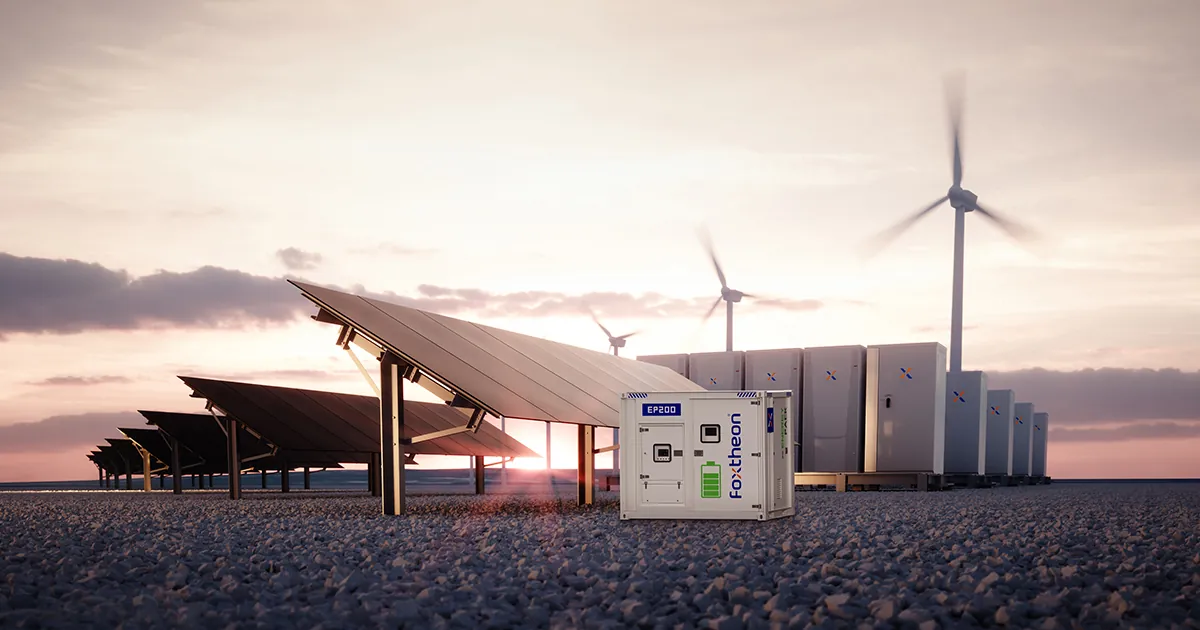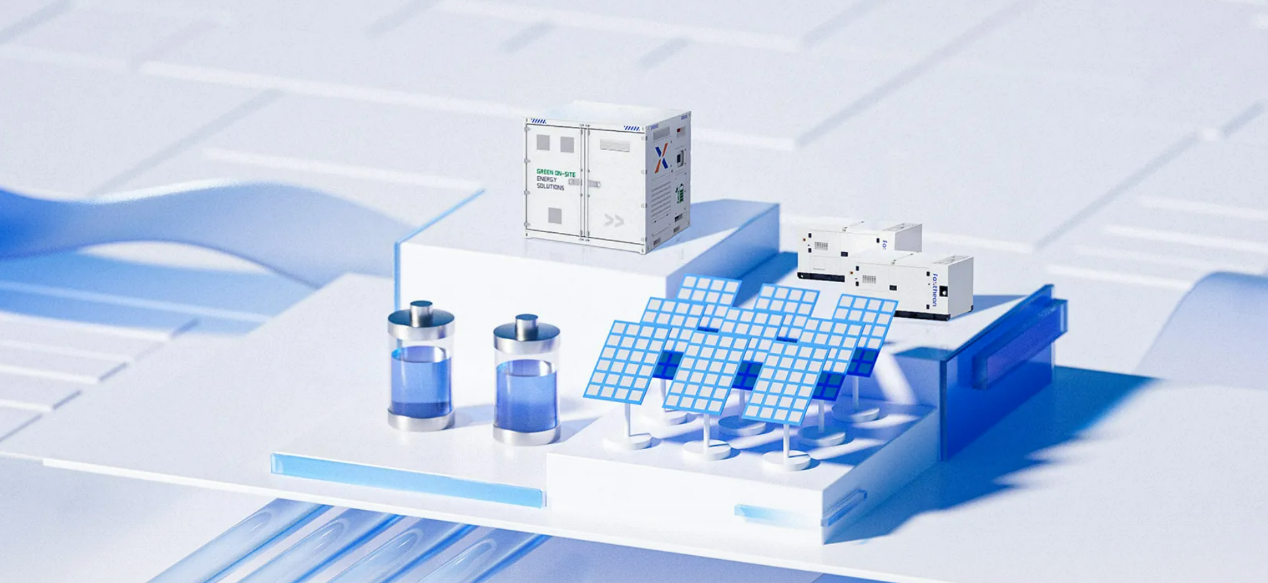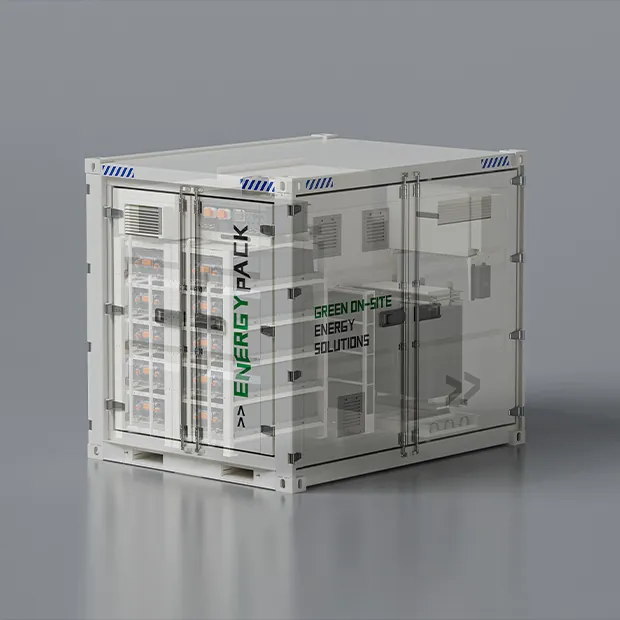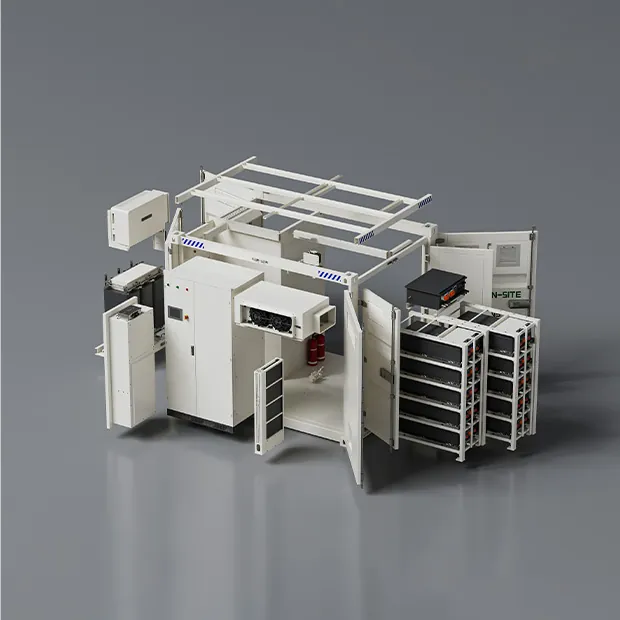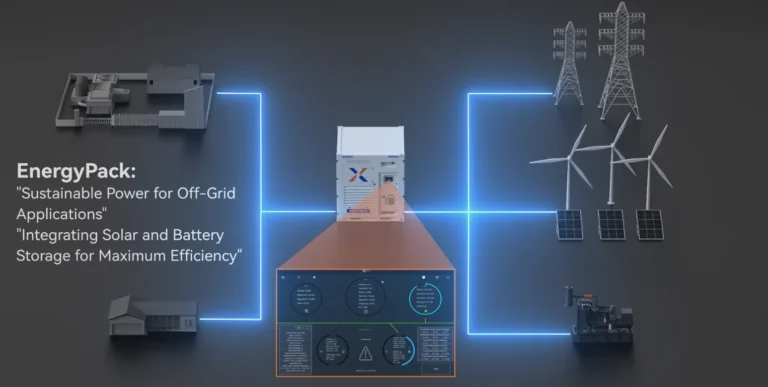Unlocking the Future of Energy: What is a Battery Energy Storage System (BESS)?
The global energy landscape is undergoing a monumental transformation, driven by an urgent need for sustainability and efficiency. At the forefront of this revolution stands the Battery Energy Storage System (BESS). Think of a BESS not just as a giant battery, but as a sophisticated energy pack – a pivotal technology that’s reshaping how we generate, store, and consume power. At Foxtheon, we specialize in advanced hybrid energy solutions, and the BESS is the very heart of our innovation, designed to make clean energy reliable, accessible, and economical.
In this ultimate guide, we’ll strip away the jargon and provide a crystal-clear understanding of what a BESS is, break down its essential components, and unveil the fascinating mechanics behind how it intelligently stores and releases energy.
What Exactly is a BESS? The Energy Pack Defined
A Battery Energy Storage System (BESS) is an integrated, scalable solution engineered to capture electrical energy from various sources, store it in rechargeable batteries, and then release it back as electricity whenever needed. This remarkable capability addresses the fundamental challenge of intermittent renewable energy (like solar and wind, which aren’t always available) and dramatically improves the stability and resilience of electrical grids.
Unlike traditional power generation that relies on continuous fuel consumption, a BESS acts as a dynamic buffer. It charges when electricity is abundant and often inexpensive (e.g., during peak solar production or off-peak utility hours) and discharges when demand is high, or renewable sources aren’t producing. This intelligent management optimizes energy flow and maximizes resource utilization.
The Anatomy of a BESS: Key Components Explained
A robust BESS is a symphony of interconnected components, each playing a crucial role in its efficient and safe operation.
- Battery Cells & Packs: The Heart of Storage
- These are the fundamental units where electrical energy is stored via electrochemical reactions. Modern BESS predominantly leverages advanced lithium-ion batteries (specifically Lithium Iron Phosphate – LiFePO4, or LFP – known for their safety, long cycle life, and thermal stability), chosen for their high energy density, power output, and durability. Individual cells are meticulously assembled into larger modules and then into full battery packs, forming the core energy reservoir.
- Battery Management System (BMS): The Intelligent Guardian
- Often called the “brain” of the battery pack, the BMS is a critical electronic system that continuously monitors and controls vital battery parameters. These include voltage, current, temperature, and state of charge (SoC) for each cell and the overall pack. Its primary functions are:
- Safety: Preventing overcharging, over-discharging, overheating, and short-circuits.
- Performance Optimization: Balancing cell voltage and temperature to ensure all cells contribute equally, maximizing efficiency.
- Longevity: Protecting the battery from conditions that could degrade its lifespan, thereby extending its operational years.
- Often called the “brain” of the battery pack, the BMS is a critical electronic system that continuously monitors and controls vital battery parameters. These include voltage, current, temperature, and state of charge (SoC) for each cell and the overall pack. Its primary functions are:
- Power Conversion System (PCS) / Inverter: The Energy Translator
- The PCS is the workhorse responsible for converting electrical energy between AC (Alternating Current)and DC (Direct Current).
- Charging: Batteries store energy as DC. When sourcing power from the AC grid or AC-output renewables, the PCS acts as a rectifier, converting AC to DC to charge the batteries.
- Discharging: Most grids and electrical loads operate on AC. When the BESS releases energy, the PCS acts as an inverter, converting the DC power from the batteries back into usable AC power.
- Foxtheon’s PCS units boast high conversion efficiency, minimizing energy losses during this critical translation process.
- The PCS is the workhorse responsible for converting electrical energy between AC (Alternating Current)and DC (Direct Current).
- Energy Management System (EMS): The Master Strategist
- The EMS is the overarching intelligence that orchestrates the entire BESS operation. It’s a sophisticated software and hardware platform that optimizes energy flow based on a multitude of real-time and forecasted data. Its decisions are driven by factors like:
- Electricity Prices: Charging when prices are low, discharging when high.
- Grid Demand: Responding to grid signals for stability or ancillary services.
- Renewable Generation Forecasts: Maximizing the use of solar or wind power.
- Operational Goals: Ensuring reliable backup power or minimizing carbon footprint.
- An advanced EMS, like Foxtheon’s FoxMind systems, ensures the BESS delivers maximum economic and operational benefits while adapting to dynamic conditions.
- The EMS is the overarching intelligence that orchestrates the entire BESS operation. It’s a sophisticated software and hardware platform that optimizes energy flow based on a multitude of real-time and forecasted data. Its decisions are driven by factors like:
- Thermal Management System: The Climate Controller
- Batteries perform optimally and have the longest lifespan within a specific temperature range. The thermal management system (which can involve active cooling, heating, or passive ventilation) maintains this ideal environment, preventing performance degradation or safety risks due from extreme temperatures.
- Enclosures & Safety Systems: The Protective Shell
- These encompass the physical housing (containers, racks) that protect the internal components from environmental factors, along with crucial safety features like fire suppression systems, circuit breakers, ventilation, and emergency shut-offs, ensuring robust and secure operation.
Unveiling the BESS Mechanism: How Energy is Stored and Released
Understanding the intricate dance of electrons within a BESS reveals its true ingenuity. The core principle revolves around electrochemical energy conversion within the battery cells.
The Charging Process: Storing Power for Future Use
Imagine a scenario where your solar panels are generating abundant electricity on a sunny day, more than your home needs, or when utility prices are at their lowest during the night. This is when the BESS initiates its charging cycle:
- Energy Inflow: Electricity, whether from solar arrays, wind turbines, or the utility grid, is directed towards the BESS.
- AC to DC Conversion (via PCS): If the incoming power is AC (as is typical from the grid or most renewable inverters), the Power Conversion System (PCS) acts as a rectifier. It efficiently converts this AC power into Direct Current (DC), which is the form of electricity batteries can store.
- Electrochemical Storage: The DC power then flows into the battery cells. Inside a lithium-ion battery, this electrical energy drives a chemical reaction. Specifically, lithium ions move from the cathode (positive electrode) through an electrolyte and embed themselves into the anode (negative electrode) structure. This process effectively stores the electrical energy as chemical potential energy.
- Intelligent Monitoring & Optimization: Throughout the charging process, the BMS meticulously monitors each cell’s voltage, current, and temperature, ensuring balanced and safe charging to prevent overcharging and extend battery life. Simultaneously, the EMS orchestrates the charging rate, optimizing it based on pre-programmed strategies – for example, prioritizing charging with excess solar, or ensuring the battery is full before anticipated peak demand periods.
The Discharging Process: Delivering Power on Demand
When electricity demand surges, renewable generation drops (e.g., at sunset), or a power outage occurs, the BESS seamlessly transitions to its discharge mode:
- Electrochemical Release: The chemical reactions within the battery cells reverse. The stored chemical energy is converted back into electrical energy as DC power. Lithium ions move back from the anode to the cathode, releasing electrons to form an electrical current.
- DC to AC Conversion (via PCS): The DC power flowing out of the batteries typically needs to be converted back into usable Alternating Current (AC) for most appliances and for feeding into the grid. The PCS now acts as an inverter, transforming the DC power into AC power.
- Intelligent Distribution: The Energy Management System (EMS) is pivotal during discharge. It determines precisely when and how much power to release. This decision-making is based on real-time factors like:
- High Electricity Prices: Discharging to avoid expensive grid power (known as peak shaving).
- Grid Outages: Providing immediate, seamless backup power to critical loads.
- Low Renewable Generation: Supplementing power when solar or wind output is insufficient.
- Grid Stability Needs: Injecting power to regulate grid frequency or voltage.
- Continuous Protection: The BMS remains active, ensuring the battery discharges within safe limits, preventing over-discharging and protecting the battery’s long-term health and performance.
Foxtheon’s Technological Edge in BESS
At Foxtheon, we don’t just assemble components; we engineer highly efficient, intelligent, and robust BESS solutions. Our commitment to innovation is reflected in:
- High-Efficiency Power Conversion: Minimizing energy losses throughout the AC/DC and DC/AC conversion cycles.
- Advanced AI-Driven EMS: Our proprietary EMS leverages artificial intelligence to learn energy patterns, predict demand, and respond dynamically to market signals, ensuring maximum economic returns and optimal system performance.
- Superior Safety Protocols: Integrating multi-layered safety features, including state-of-the-art thermal management, redundant protection circuits, and robust enclosures, for unparalleled reliability and peace of mind.
- Seamless Integration Capabilities: Our BESS units are designed for straightforward integration with diverse energy sources, existing grid infrastructure, and various application scenarios.
By mastering this complex yet elegant mechanism, Foxtheon’s BESS technology empowers individuals, businesses, and utilities to achieve greater energy independence, resilience, and sustainability. It’s more than just storing power; it’s about intelligently managing energy for a greener, more stable, and cost-effective future.
